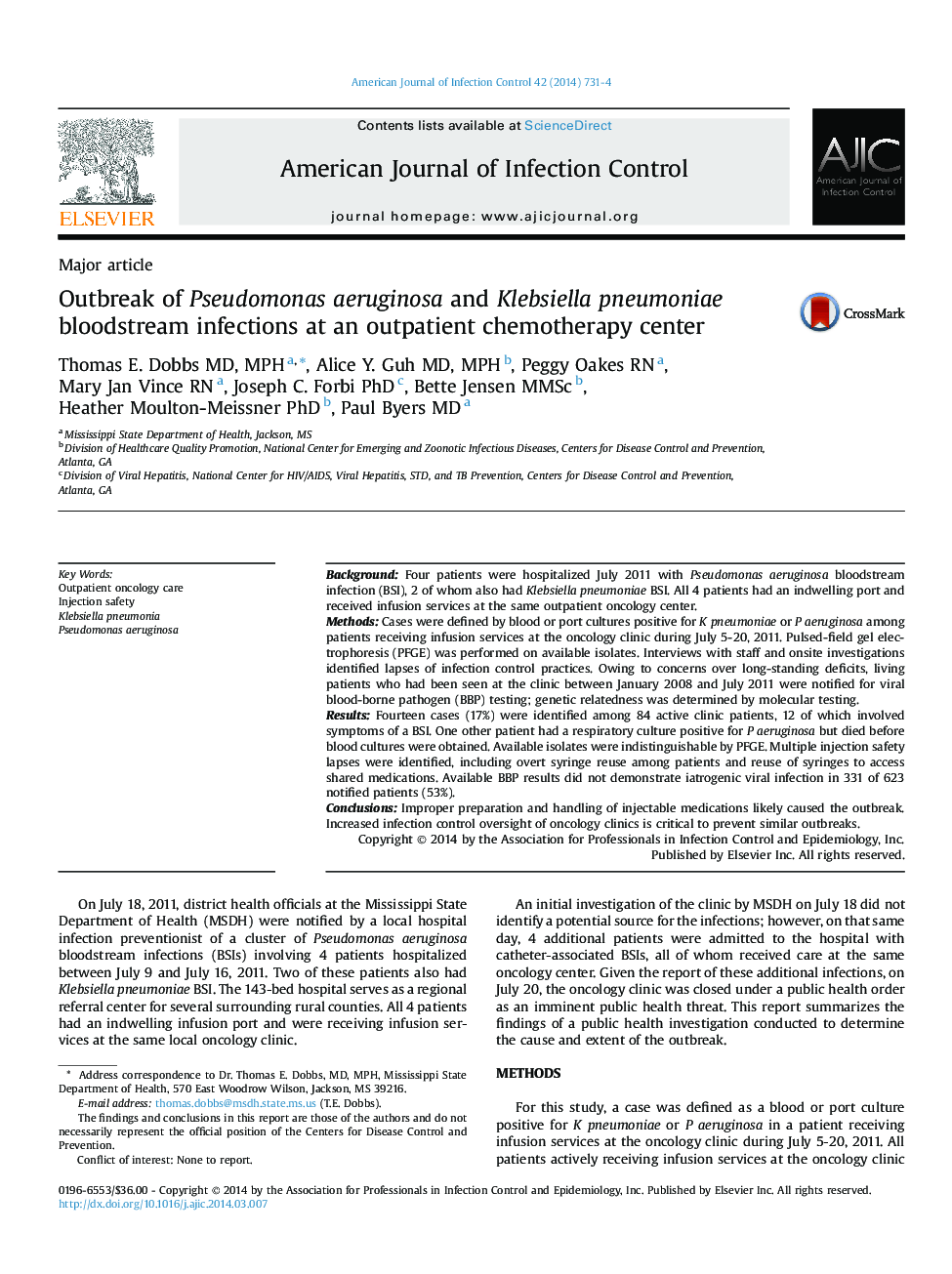| Article ID | Journal | Published Year | Pages | File Type |
|---|---|---|---|---|
| 2636963 | American Journal of Infection Control | 2014 | 4 Pages |
BackgroundFour patients were hospitalized July 2011 with Pseudomonas aeruginosa bloodstream infection (BSI), 2 of whom also had Klebsiella pneumoniae BSI. All 4 patients had an indwelling port and received infusion services at the same outpatient oncology center.MethodsCases were defined by blood or port cultures positive for K pneumoniae or P aeruginosa among patients receiving infusion services at the oncology clinic during July 5-20, 2011. Pulsed-field gel electrophoresis (PFGE) was performed on available isolates. Interviews with staff and onsite investigations identified lapses of infection control practices. Owing to concerns over long-standing deficits, living patients who had been seen at the clinic between January 2008 and July 2011 were notified for viral blood-borne pathogen (BBP) testing; genetic relatedness was determined by molecular testing.ResultsFourteen cases (17%) were identified among 84 active clinic patients, 12 of which involved symptoms of a BSI. One other patient had a respiratory culture positive for P aeruginosa but died before blood cultures were obtained. Available isolates were indistinguishable by PFGE. Multiple injection safety lapses were identified, including overt syringe reuse among patients and reuse of syringes to access shared medications. Available BBP results did not demonstrate iatrogenic viral infection in 331 of 623 notified patients (53%).ConclusionsImproper preparation and handling of injectable medications likely caused the outbreak. Increased infection control oversight of oncology clinics is critical to prevent similar outbreaks.
